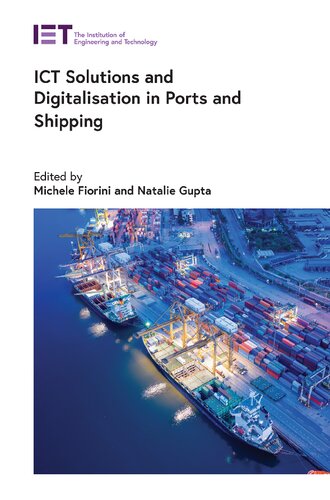

Most ebook files are in PDF format, so you can easily read them using various software such as Foxit Reader or directly on the Google Chrome browser.
Some ebook files are released by publishers in other formats such as .awz, .mobi, .epub, .fb2, etc. You may need to install specific software to read these formats on mobile/PC, such as Calibre.
Please read the tutorial at this link: https://ebookbell.com/faq
We offer FREE conversion to the popular formats you request; however, this may take some time. Therefore, right after payment, please email us, and we will try to provide the service as quickly as possible.
For some exceptional file formats or broken links (if any), please refrain from opening any disputes. Instead, email us first, and we will try to assist within a maximum of 6 hours.
EbookBell Team

0.0
0 reviewsGiven the volumes of global ship traffic, solutions are needed to reduce waiting times, costs, energy consumption and emissions. This systematic reference on ICT solutions and digitalisation in the ports and shipping sector covers new and existing technologies, different types of digital systems, and offers illustrative examples and case studies.
Coverage includes the following topics: the global trade facilitation regulatory framework and the role of ICT; maritime ports and cybersecurity; e-navigation and shore-based monitoring systems; maritime transportation along the Northern Sea Route; smart shipping beyond e-navigation; maritime communications; emerging radio communication technologies in the maritime domain; a data-driven methodology for maritime patterns of life discovery; real-time information with its technology; digital supply chain and port information modelling (PIM); ICT innovation in port-hinterland transport services; decarbonisation technologies in shipping and the question of transition fuels; and finally the advent of shore-based navigation: from vessel traffic services (VTS) to e-navigation maritime service portfolio (MSP).
The aim of this work is to examine the application of ICT solutions and digitalisation to the movement and clearance of freight at seaports globally. It provides conceptual clarity on the applicability of the different technologies and systems used for this purpose, and the relevance of such projects for different types of ports, from a trade facilitation perspective. It is therefore of particular relevance to researchers, academics, consultants, chief technology officers, and advanced students in the field of freight and logistics, especially in a maritime context. The book is also a valuable reference for anyone involved in port logistics in a managerial or operational capacity, and to port authorities.